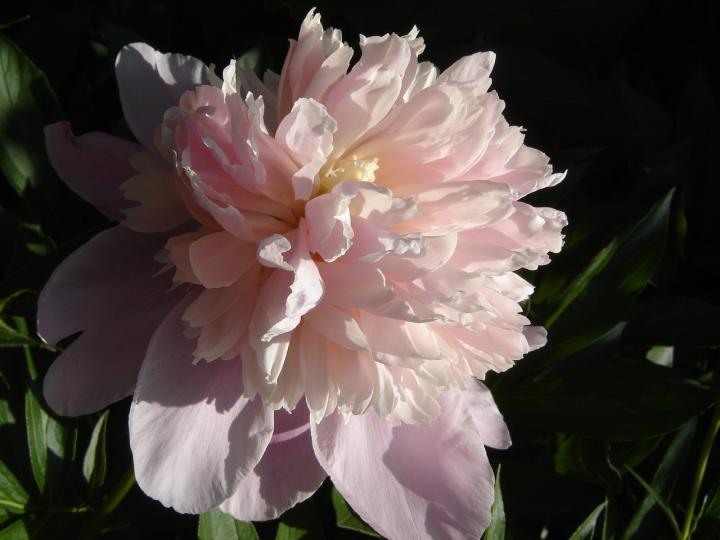






Taken in my garden, late spring 2007.
Michele RosePeonies are outrageously beautiful in bloom in springtime, with lush foliage all summer long. Peony plants require little maintenance as long as they are planted properly and establish themselves; they do not respond well to transplanting.
Peony flowers are perennials that come back every spring to take your breath away. The plants may live longer than you do—some have been known to thrive for 100 years.
The fattest and most scrumptious of all flowers, a rare fusion of fluff and majesty, the peony is now coming into bloom.
–Henry Mitchell, American writer (1923-93)
They’re hardy to Zone 3 and grow well as far south as Zones 7 and 8. In most of the country, the rules for success are simply full sun and well-drained soil. Peonies even relish cold winters, because they need chilling for bud formation.
Peonies make fine sentinels lining walkways and a lovely low hedge. After its stunning bloom, the peony’s bushy clump of handsome glossy green leaves lasts all summer, and then turns purplish or gold in the fall, as stately and dignified as any shrub.
In mixed borders, peonies bloom with columbines, baptisias, and veronicas, and combine well with irises and roses. Plant white peonies with yellow irises and a froth of forget-me-nots; set off pink peonies with blue Nepeta or violets.
Tip: Don’t plant too deep! In most of the country, the peony’s eyes (buds) should be no deeper than 1-½ to 2 inches below the soil line!
Like children, young peonies take time to develop. They usually need a few years to establish themselves, bloom, and grow.
Peonies thrive on benign neglect. Unlike most perennials, they don’t need to be dug and divided.
Peonies are generally very hardy. They are prone to Verticillium wilt, ringspot virus, tip blight, stem rot, Botrytis blight, left blotch, Japanese beetle, and nematodes.
Many gardeners wonder why so many ants crawl on the peony buds. They are eating nectar in exchange for attacking bud-eating pests. Never spray the ants; they’re helping you nurture peonies to bloom.
Luckily, peonies are also one of many deer-resistant plants you can grow in your garden.
Peonies are spring-bloomers, but you can plan your garden for a successive display of flowers from mid-May to early June. Here are some choices:
Had I but four square feet of ground at my disposal, I would plant a peony in the corner and proceed to worship. –Alice Harding, The Book of the Peony
Tip: Peonies make wonderful cut flowers, lasting more than a week. For best results, cut long stems when the buds are still fairly tight.
Cosmos: How to Plant, Grow, and Care for Cosmos
Petunias: How to Plant, Grow, and Care for Petunias
Yarrow: How to Plant, Grow, and Care for Yarrow
Aster: How to Plant, Grow, and Care for Aster Flowers
Sedum: How to Plant, Grow, and Care for Sedum Flowers
Crocuses: How to Plant, Grow, and Care for Crocus Flowers
Daffodils: How to Plant, Grow, and Care for Daffodil Flowers
Dahlias: How to Plant, Grow, and Care for Dahlia Flowers
Hyacinths: How to Plant, Grow, and Care for Hyacinth Flowers
Lilies: How to Plant, Grow, and Care for Lily Flowers
Marigolds: How to Plant, Grow, and Care for Marigold Flowers
Morning Glories: How to Plant, Grow, and Care for Morning Glory Flowers
Copyright © www.100flowers.win Botanic Garden All Rights Reserved